Introduction to Dragon fruit: Dragon fruit (Hylocereus undatus) is a tropical fruit belonging to the climbing Cactaceae family. In recent years, Dragon fruit has been a growing market in India and many farmers are now trying their hand at this new crop. The fruit is commonly grown in Thailand, Sri Lanka, Israel, and Vietnam but is now slowly growing in India. It is also known worldwide as ‘Pitaya’, ‘Pitahaya’, Strawberry Pear, Noble Woman, and Queen of the Night.
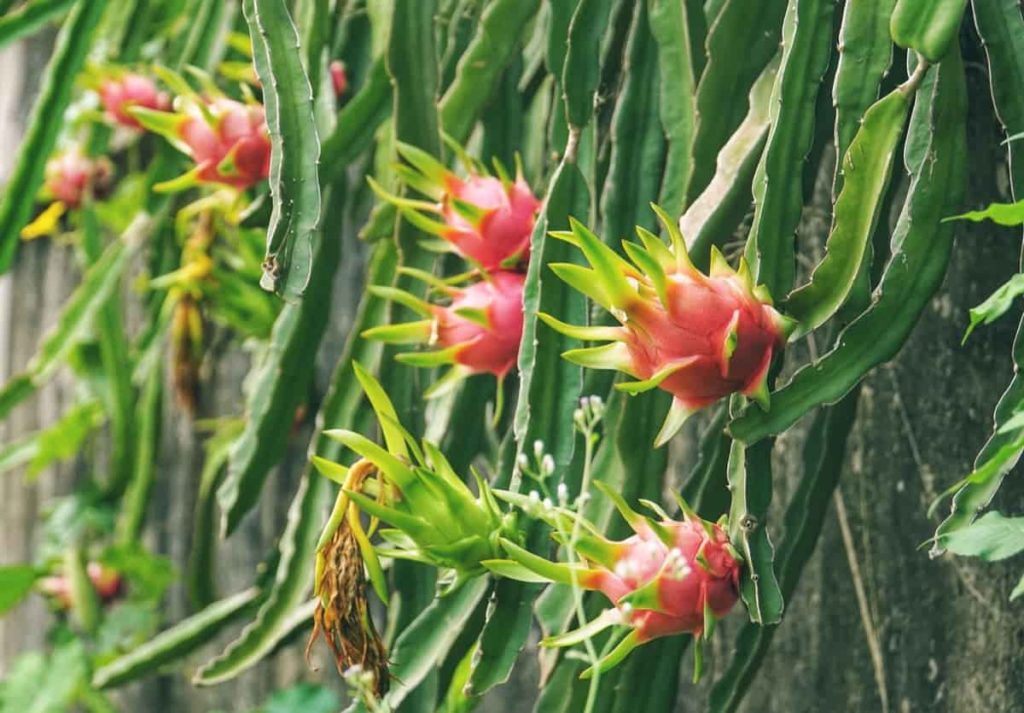
The low maintenance and high profitability of Dragon fruit have attracted the farming community all over India. Prices in the market are highly variable and mainly depend on the size of the fruit and the color of the pulp. Dragon fruit requires very little attention to pests and diseases, so farmers are showing more interest in it. Let’s find out how to double the profit by growing this fruit.
Types of Dragon fruit
Different types of Dragon fruit are;
- Hylocereus undatus
- Hylocereus polyrhizus
- Hylocereus costaricencis
- Hylocereus (Selenicerus) megalanthus
Why invest money in Dragon fruit?
- After the initial expenses of the first three years, a profit in addition to all costs, which is double your expenses, is refunded after the first harvest.
- Along with the medical life-saving value that Dragon Fruit contains, the needs are endless and at the same time the cost of health is endless.
- A Dragon fruit farm, you are seeing 55-60% profit annually.
Tips to double the profit by growing this fruit
- Site selection – For best growth and fruit production, Dragon plants should be planted in an open, well-lit sunny place.
- Soil – Dragon can be grown in a wide range of soils. Soils with good drainage and high organic matter content are recommended.
Dragon has gained equal popularity among consumers and farmers due to its benefits and highly profitable production. It is high in fiber and water, and its use is associated with reduced coronary heart disease and improved digestion. The presence of essential vitamins and minerals also makes this fruit an excellent source of boosting immunity.
In case you miss this: Organic Dragon Fruit Farming – Cultivation, Business Plan
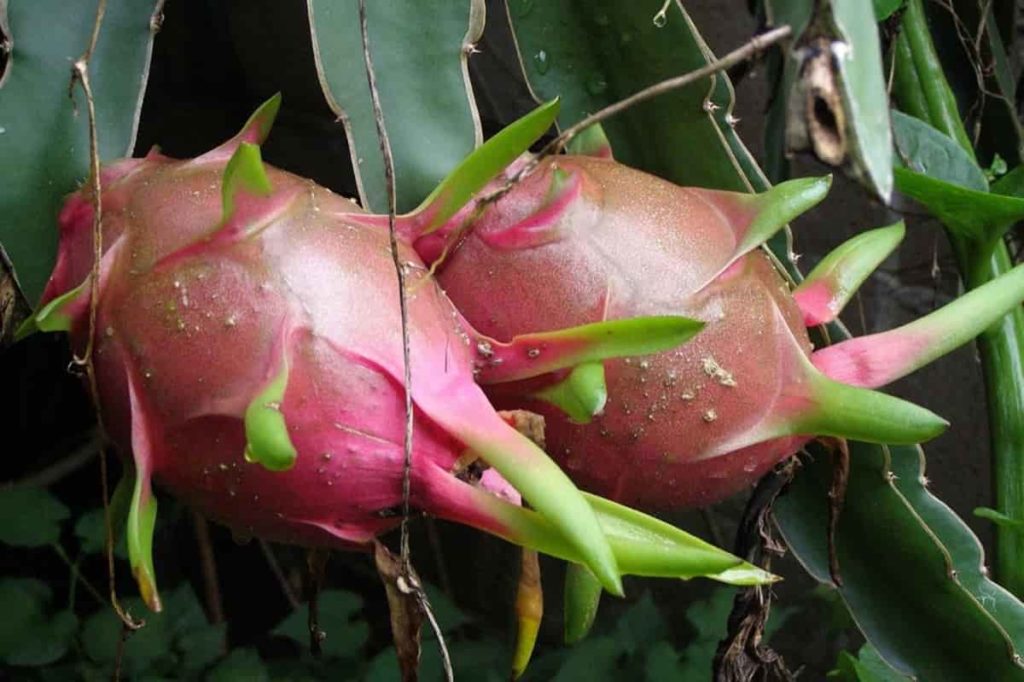
Dragon fruit market price
The price of Dragon fruit is approximately Rs. 48 to 450 per kg.
Make huge profits by growing Dragon fruit
Dragon fruit farming requires less water. It can withstand drought. Because of this, it can be grown in hot areas. When the abusive white pulp is extracted from the pink rough Dragon-like skin, the fruit is attracted to itself. When cooked, it is slightly soft to the touch and is used as a garnish on salty salads and fruit.
The total life span of the Dragon fruit tree is 15-20 years, and therefore it is imported for proper selection of poles and rings. Special RCC poles are installed to ensure strong and lasting support. Usually, four plants are planted per pole to get maximum yield. Adequate spacing between pole to pole and row to row is maintained for free movement during pruning and maintenance work. Basic nutrients and fertilizers are applied from time to time according to the soil and water characteristics of each plant.
Seeds should be of good quality for growing Dragon fruit. The grafted plant is better, as it takes less time to prepare. The fruit can be sown any time from March to July. The plant matures in about one year and begins to bear fruit the next year. However, the fruit is produced in good quantity from the third year. One of the advantages of cultivating Dragon fruit is that it requires less water and can be grown in any soil.
Method of Dragon fruit plantation
The most common method of propagating Dragon fruit is cutting. However, you can also spread it through seeds. But the seeds take a long time and they will not continue the characteristics of their mother plant. That’s why the seed method is not suitable if you own a commercial Dragon fruit farm. Therefore, if you want the full benefits of Dragon fruit farming, you should use plant cuttings from a standard mother plant. You should use 20 cm cuttings for planting in the field.
In addition, you will need to pile the cuttings 2 days before planting. Now you can apply them with a mixture of dry cow dung. You should keep a plant-to-plant distance of 2 meters x 2 meters. For the size of the pit, you have to dig 60 cm x 60 cm x 60 cm. In addition, you will need to fill these pits with topsoil and fertilizer, including 100 grams of superphosphate.
In case you miss this: Dragon Fruit Farming Profit, Cost, Yield, Project Report
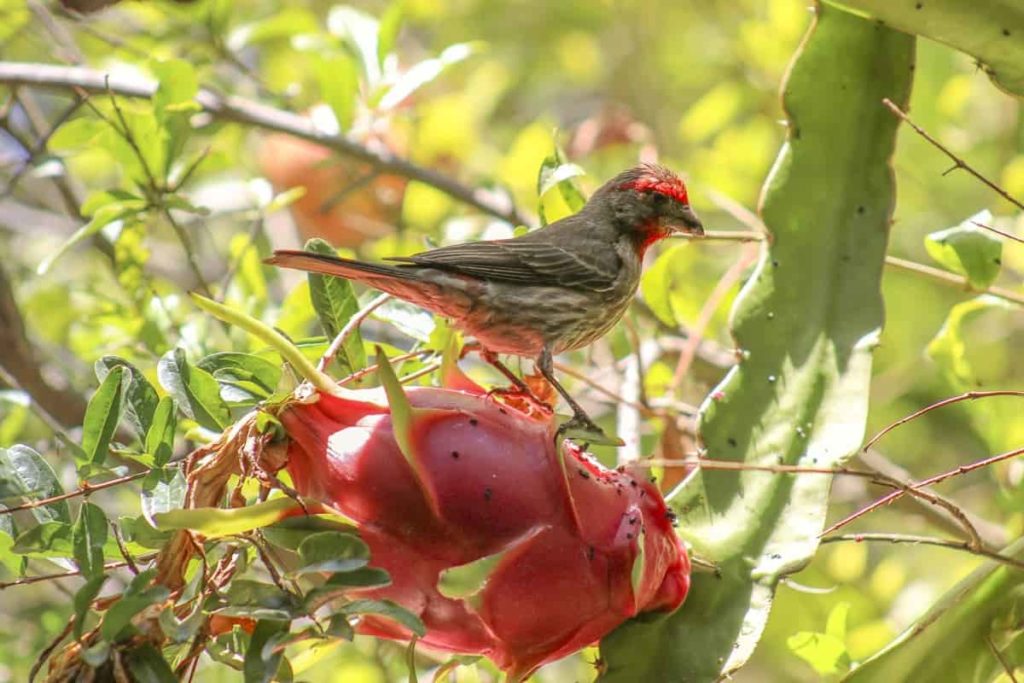
Package of practices to double the profit by growing dragon fruit
Dragon Fruit is a fast-growing, semi-epiphytic vine that requires support like a vertical pole with a ring on top. The economic life span of Dragon fruit is 15 to 20 years and throughout the period, the plants are loaded with fruits. Thus, it needs a very strong and durable supporting structure. Reinforced cement concrete (RCC) cast poles, two meters high, on top of which a square / rectangular plate is used to support the plants.
In addition, drip irrigation also increases the cost of the initial investment. The structure of RCC poles can be erected in different places such as 2.5 × 2 m, 3 × 1.5 m, 3 × 3 m, and 4 × 3 m. Maximum distance helps air circulation and light entry and reduces the spread of diseases and pests. Dragon fruit blooms and bears fruit according to the monsoon season in India. Its flowers are hermaphrodites in nature (male and female organs in the same flower) and bloom at night.
Nocturnal agents such as bats and hawks act as insect repellents. Proper pollination ensures fruit setting, size, and total crop yield. Flowers and fruits are usually in a series of flushes and usually in three to five segments from June to November. Each fruit weighs about 200 to 700 grams, depending on the method of administration. In well-managed orchards, economic fruit production begins after three years and the average yield can be 5 tons per acre.
Dragon Fruit plant training
To get more profit from Dragon Fruit Farming, you should give support of concrete or wooden columns. You have to tie immature Dragon plants with these columns. To maintain the Dragon shrub, you must use a round/circular metal frame.
Fertilizer and manure
Organic manure plays an important role in the good growth and development of the Dragon fruit plant. You must treat each plant with at least 10 to 15 kg of organic compost. After that, you must add 2 kg of fertilizer each year. In addition to organic, it also needs inorganic fertilizers for good plant growth. Fertilizer ratio for plant stage is muriate of Potash: Super Phosphate: Urea = 40:90:70 grams / plant.
At the fruiting stage, you also need to give more potash and less nitrogen. Different types of fertilizers should be applied from flowering to harvesting stages, including urea: superphosphate: muriate of potash = 50: 50: 100 g / plant. This solution can be given before flowering, before fruiting, and after harvesting. This can increase the productivity of Dragon fruit farms.
In case you miss this: Frequently Asked Questions About Dragon Fruit Farming
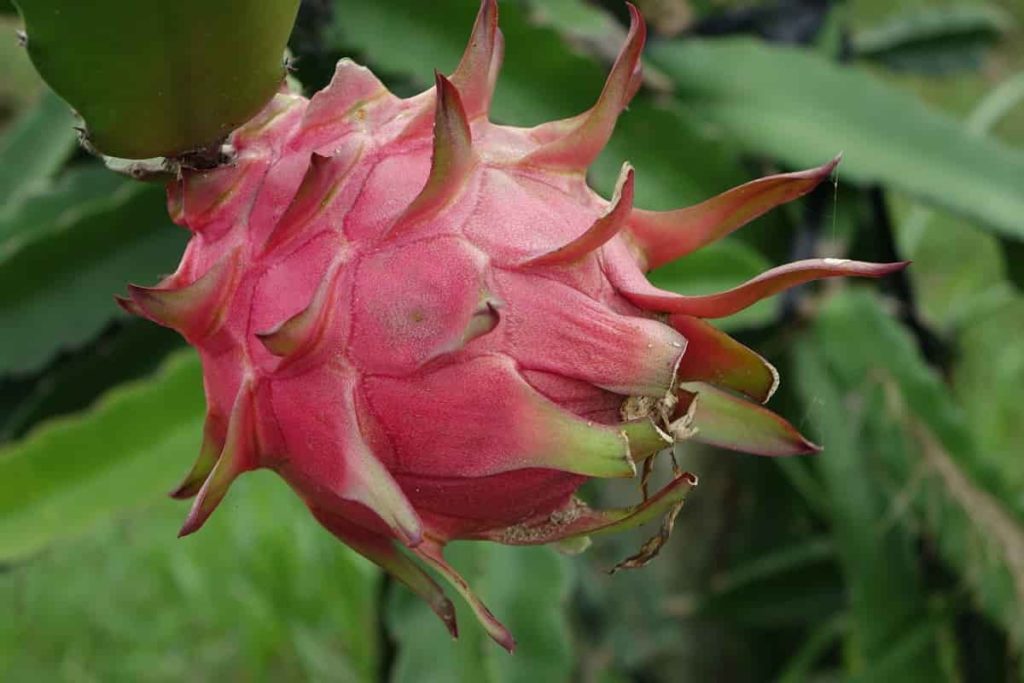
Pruning
Pruning can induce flowers and stem branches. Pruning is done to remove all damaged, diseased or dead stems and any stems that touch the soil. Pruning is also done after the harvest is completed or it can be done 1 to 3 times a year.
Pests and Diseases
The biggest advantage of Dragon fruit farming is that it has no pests or diseases. Therefore, you do not treat plants with other chemicals. Therefore, it reduces the cost per acre of Dragon fruit.
Harvesting Dragon fruit
Forty to forty-five days (40-45 days) after the fruit set, the mature fruit turns completely red or yellow. Dragon fruits are harvested when a hole appears inside the fruit cavity and the wings turn red. Some species are prickly and it is recommended to wear leather gloves when harvesting. Carefully remove the fruit from the plants, taking care not to damage the skin.
Earn excellent income returns through dragon farming
Calculate Dragon fruit profit per acre
Plants are usually planted in cement poles because they need help to maintain a standing position. The poles are usually cemented to prolong life and minimize any damage to the plant. An acre has about 300 poles and one pole usually bears 15 to 25 kg of fruit. In practice, it has been observed that production of 60/80 kg per pole is possible.
For example, we can take, the cost of fruits come into the market at Rs. 300 to 400 per kg. The general farm rate is between Rs. 125 to 200 per kg. These figures are for a well-maintained farm. So, the calculation will work like this:
One acre x 300 poles x 15 kg x 125 rupees = Approximately Rs. 5.63 lakhs per acre per year.
In case you miss this: Dragon Fruit Cultivation Information Guide
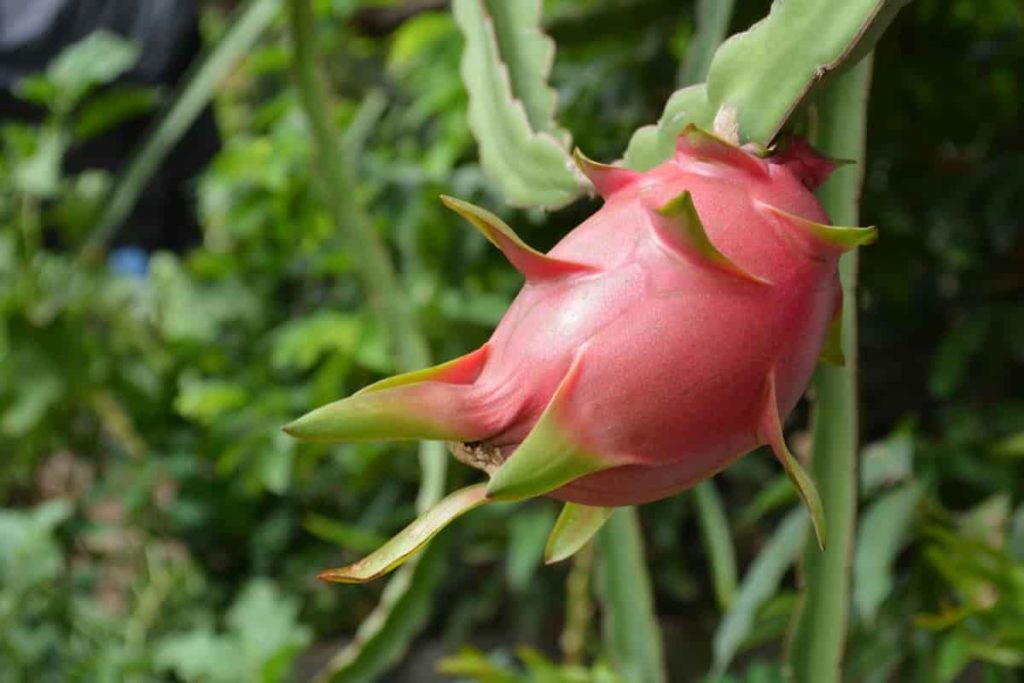
Note – That all numbers can be vary based on several factors. Economic factors like commodity prices, labour, and cost of land, transport, capital, markets, etc. affect farming. Climatic factors like light, water and rainfall, temperature, air, relative humidity, and wind also affect farming.
The average yield is 5-6 tons per acre while the market price is around Rs. 200 / kg. Poles, rings, cow dung, and fertilizer will cost every 4 months. In addition to the costs of pruning and irrigation (preferably drip irrigation), there is also the cost of labor and nets to protect plants from birds. The recurring cost of successful growers ranges from about Rs. 80,000 to Rs. 100,000 per tonne.
A fixed cost of poles, rings, and drip irrigation will be considered and the average cost for them is about Rs. 25,000 per tonne. Therefore, after deducting all the expenses, the net profit in the first 2 years comes close to Rs. 4.50 lakhs per acre approximately. Therefore, you can earn lakhs from this wonderful fruit.
- Types of Pesticides Used in Agriculture: A Beginner’s Guide
- Economical Aquaculture: A Guide to Low-Budget Fish Farming
- 15 Common Planting Errors That Can Doom Your Fruit Trees
- How to Make Houseplants Bushy: Effective Tips and Ideas
- Innovative Strategies for Boosting Coconut Pollination and Yield
- Pollination Strategies for Maximum Pumpkin Yield
- The Complete Guide to Chicken Fattening: Strategies for Maximum Growth
- Natural Solutions for Tulip Problems: 100% Effective Remedies for Leaf and Bulb-Related Issues
- Revolutionizing Citrus Preservation: Towards a Healthier, Greener Future
- Natural Solutions for Peony Leaf and Flower Problems: 100% Effective Remedies
- Maximizing Profits with Avocado Contract Farming in India: A Comprehensive Guide
- Natural Solutions for Hydrangea Problems: 100% Effective Remedies for Leaf and Flowers
- The Ultimate Guide to Choosing the Perfect Foliage Friend: Bringing Life Indoors
- From Sunlight to Sustainability: 15 Ways to Use Solar Technology in Agriculture
- The Ultimate Guide to Dong Tao Chicken: Exploring from History to Raising
- The Eco-Friendly Makeover: How to Convert Your Unused Swimming Pool into a Fish Pond
- Mastering the Art of Delaware Chicken Farming: Essentials for Healthy Backyard Flocks
- 20 Best Homemade Fertilizers for Money Plant: DIY Recipes and Application Methods
- How to Craft a Comprehensive Free-Range Chicken Farming Business Plan
- Brighten Your Flock: Raising Easter Egger Chickens for Beauty and Bounty
- How to Optimize Your Poultry Egg Farm Business Plan with These Strategies
- Subsidy for Spirulina Cultivation: How Indian Government Schemes Encouraging Spirulina Farmers
- Ultimate Guide to Raising Dominique Chickens: Breeding, Feeding, Egg-Production, and Care
- Mastering the Art of Raising Jersey Giant Chickens: Care, Feeding, and More
- Ultimate Guide to Raising Legbar Chickens: Breeding, Farming Practices, Diet, Egg-Production
- How to Raise Welsummer Chickens: A Comprehensive Guide for Beginners
- How to Protect Indoor Plants in Winter: A Comprehensive Guide
- Ultimate Guide to Grow Bag Gardening: Tips, Tricks, and Planting Ideas for Urban Gardeners
- Guide to Lotus Cultivation: How to Propagate, Plant, Grow, Care, Cost, and Profit
- Agriculture Drone Subsidy Scheme: Government Kisan Subsidy, License, and How to Apply Online
- Ultimate Guide to Raising Araucana Chickens: Breed Profile, Farming Economics, Diet, and Care
- Bringing Hydroponics to Classroom: Importance, Benefits of Learning for School Students
- Ultimate Guide to Raising Polish Chickens: Breed Profile, Farming Economics, Diet, and Care
- Ultimate Guide to Raising Australorp Chickens: Profile, Farming Economics, Egg Production, Diet, and Care
- Silkie Chicken Farming: Raising Practices, Varieties, Egg Production, Diet, and Care
- Sussex Chicken Farming: Raising Practices, Varieties, Egg Production, Diet and Care